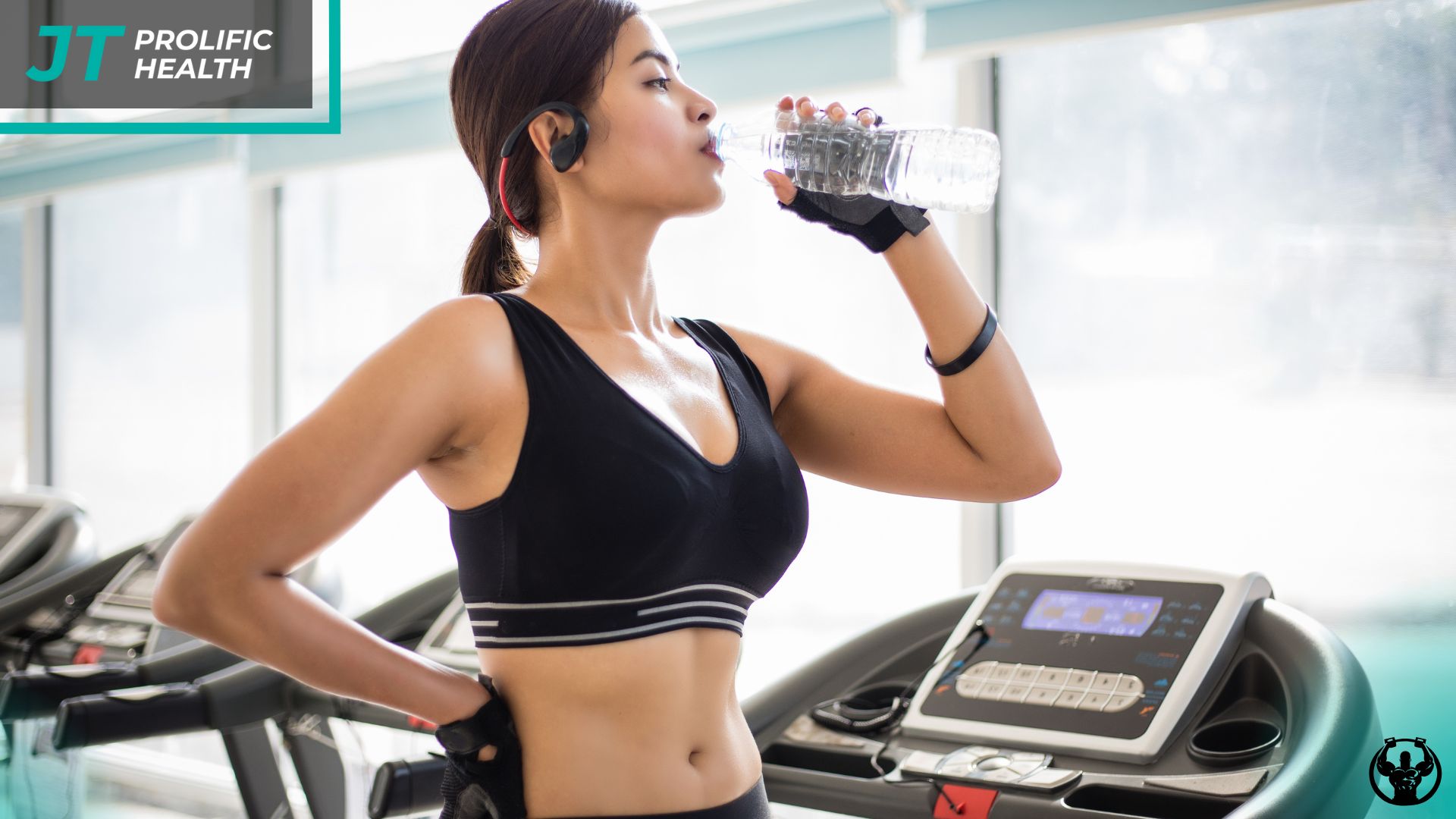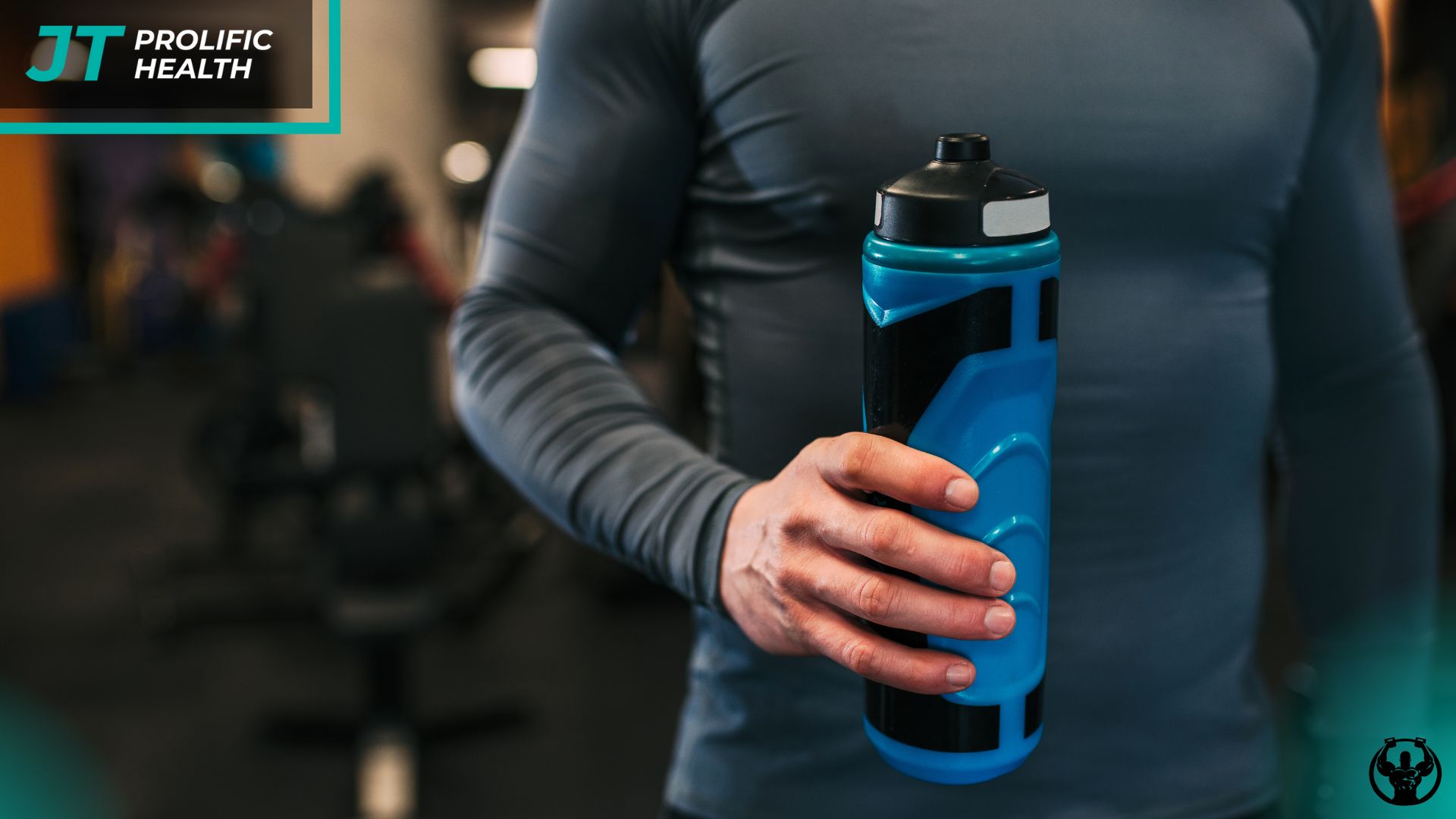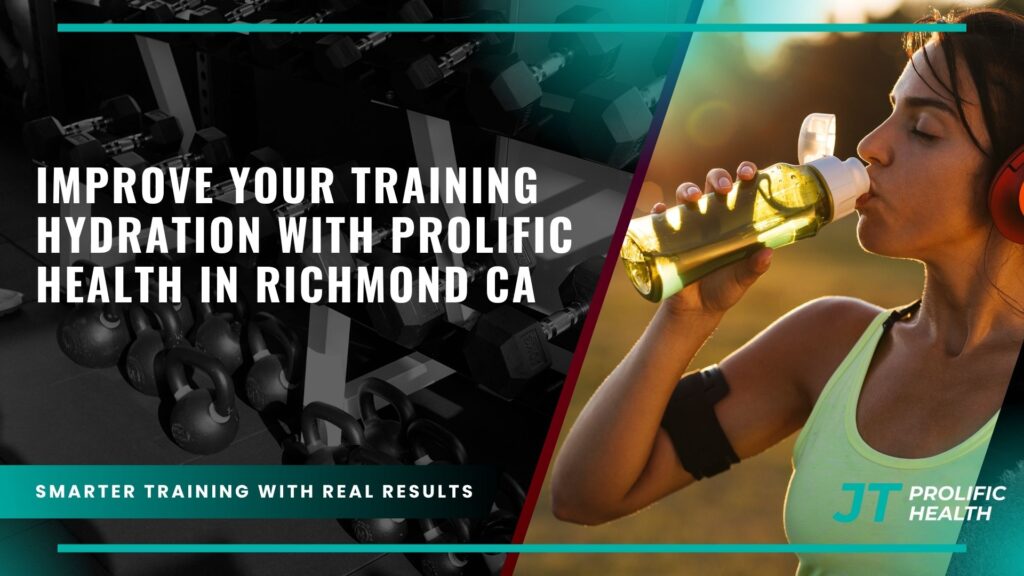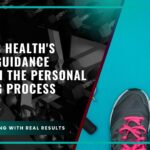Did you know athletes in endurance sports can lose 6-8 cups of fluid every hour? That’s enough to fill a large water bottle twice over. Without proper replenishment, this deficit triggers fatigue, cramps, and even heat exhaustion within minutes.
Water isn’t just a basic need—it’s the silent partner in every rep, sprint, or climb. Your body relies on it to deliver nutrients, remove waste, and keep joints moving smoothly. When levels drop by just 2%, reaction times slow, and focus fades. Yet most active individuals only drink when thirst strikes—a sign they’re already behind.
At Prolific Health in Richmond, we’ve seen how personalized hydration plans transform results. Whether you’re cycling Vancouver’s hills or pushing through a midday workout, timing matters. Strategic fluid intake supports blood flow, muscle recovery, and energy levels—keys to staying injury-free and consistent.
Key Takeaways
- Endurance activities drain up to 3 quarts of fluid hourly
- Mild dehydration reduces speed, focus, and joint flexibility
- Thirst signals mean you’re already dehydrated
- Science-backed strategies prevent performance drops
- Balanced hydration regulates body temperature during exertion
Understanding the Importance of Hydration for Your Training
Your body’s performance hinges on more than effort alone—fluid balance acts as the invisible engine powering every move. Even minor dips in water levels disrupt systems you rely on during exercise, from oxygen delivery to joint mobility.


How Hydration Fuels Physical Output
Water keeps joints flexible, allowing smooth movements during sprints or lifts. Without enough fluid, cartilage loses cushioning, slowing reflexes and reducing range of motion. Muscles—including your heart—require adequate hydration to contract efficiently. This prevents cramping and maintains steady blood flow when intensity rises.
Breathing efficiency also depends on fluid balance. Body moisture helps humidify inhaled air, making oxygen absorption easier for your lungs. During exertion, 75% of energy generates heat. Proper hydration lets you sweat effectively, keeping core temperature below 38°C.
Spotting Dehydration Before It Escalates
Early symptoms often appear subtly. You might notice lagging energy, difficulty concentrating, or heavier-than-normal breathing. Headaches and irritability can signal your brain needs more fluids to process tasks. Muscle twitches or sudden fatigue mid-session are red flags.
Monitor these indicators closely:
- Dark urine colour
- Dry mouth during rest periods
- Unusual heart rate spikes
Addressing these signs promptly prevents performance drops and supports recovery. Pair regular fluid intake with electrolyte-rich options for sustained results.
Local Hydration Insights from Richmond and Vancouver
Regional climate plays a bigger role in fluid needs than many realize. Coastal cities like Richmond and Vancouver face unique challenges—from summer humidity to rainy-season chills—that reshape how active individuals maintain balance.


Local Government Hydration Recommendations
Health authorities in both cities emphasize adjusting intake based on three factors:
- Daily temperature swings (up to 15°C in spring/fall)
- Indoor vs. outdoor activity environments
- Age-specific needs for youth and masters athletes
Vancouver Coastal Health suggests drinking 500ml of water 2 hours before exercise during high-humidity days. Richmond Public Services recommends adding 200ml per hour for outdoor sessions when temperatures exceed 20°C. These guidelines help people adapt to conditions common in British Columbia’s mixed climate.
Your sweat rate here isn’t the same as in drier regions. Morning fog and afternoon sun create shifting demands—a 10km run at 7 AM vs. 3 PM requires different strategies. Track your intake using time-marked bottles, especially when transitioning between gyms and trails.
Prolific Health’s hybrid coaching approach integrates these regional nuances. We consider how body composition and seasonal weather patterns interact, creating personalized ways to stay fueled through BC’s dynamic seasons.
Monitoring Your Hydration Levels
Effective hydration monitoring starts with understanding your body’s subtle cues. Small daily habits help you stay ahead of fluid loss before it impacts performance. Here’s how to track your status using methods that fit seamlessly into your routine.


Checking Urine Colour for Euhydration
Your urine acts as a real-time hydration gauge. Aim for a pale straw-yellow shade—this signals optimal balance. Darker golden tones often mean your body needs more fluids. Track these patterns:
- Clear to light yellow: Well-hydrated
- Bright yellow: Borderline
- Amber or brown: Requires immediate attention
Frequency matters too. If you’re visiting the bathroom less than four times daily, increase your intake. Smaller output volumes also hint at potential dehydration.
Using Time-Marked Water Bottles
Visual reminders eliminate guesswork. Bottles with hourly markers create built-in checkpoints. Finish each section by its labeled time to maintain steady intake. This method works especially well during:
- Morning workouts
- Office hours
- Outdoor activities
Pair this tool with regular urine checks. Together, they form a reliable system to prevent dehydration before it slows you down.
Fluid Strategies for Pre, During and Post Training
Timing your fluid intake can make or break your workout results. Just like pacing during a race, strategic drinking habits ensure your body performs when it matters most. Let’s break down science-backed methods to fuel every phase of your session.
Pre-training Preparation with Fluids
Start strong by preloading fluids 2-4 hours before exercise. Aim for 5-10 mL per kilogram of body weight—roughly 1-2 cups for most athletes. Follow this with 24 ounces of electrolyte-enhanced drink two hours prior. This dual-phase approach primes muscles and maintains blood volume for explosive starts.
Effective Hydration During and After Exercise
For sessions under 45 minutes, sip plain water every 10-30 minutes. Beyond that mark, switch to drinks containing sodium and potassium. Adults need 0.4-0.8 litres hourly—about 4-8 gulps every 15 minutes. Post-workout, weigh yourself and drink 16-24 ounces per pound lost within 90 minutes. This rapid replenishment speeds recovery and preps you for tomorrow’s effort.
Key strategies to remember:
- Pre-load with electrolytes 2 hours pre-exercise
- Use timed sips during long sessions
- Replace 150% of lost fluids post-workout
Electrolyte Balance and Its Key Role in Training Hydration
Electrolytes act as your body’s electrical system, powering everything from muscle contractions to heartbeats. When you sweat, you lose these vital minerals—up to 2 quarts of fluid and salt per hour during intense activity. Replenishing them isn’t optional; it’s what keeps your systems firing safely and efficiently.
Sources and Benefits of Essential Electrolytes
Sodium, potassium, calcium, and magnesium each play distinct roles. Sodium helps your nerves send signals to muscles—including your heart—while aiding nutrient absorption. Potassium regulates fluid balance inside cells, preventing cramps. Calcium supports bone strength and muscle function, while magnesium aids energy production.
Your sweat contains 115mg to over 2,000mg of sodium per litre. This wide range explains why generic sports drinks often fall short. Those training in Richmond’s humid summers or Vancouver’s variable climates need tailored solutions.
Managing Electrolyte Intake for Peak Performance
Aim for 700mg of sodium per litre of fluid during endurance activities. Most sports drinks provide 200mg per 16 ounces—supplement with sodium-rich snacks if needed. Balance matters: too little causes muscle issues, while excess risks hyponatraemia.
Practical strategies include:
- Testing sweat sodium levels monthly
- Mixing commercial drinks with coconut water
- Consuming salted nuts post-workout
Local athletes benefit from combining regional foods like BC salmon (rich in potassium) with precision hydration plans. This approach maintains electrical gradients for optimal performance without guesswork.
Prolific Health Tips for Optimal Training Hydration
Customizing your fluid intake isn’t just about water—it’s about science-backed strategies tailored to your sweat. At Prolific Health, we’ve refined approaches that work for Richmond and Vancouver athletes, whether you’re cycling Stanley Park’s trails or lifting at a local gym. The right balance of fluids and minerals keeps your body primed without guesswork.
Expert Guidance Backed by Research
Commercial sports drinks often miss the mark for individual needs. Research shows 6-8% carbohydrate concentration fuels energy best during exertion. For a cost-effective alternative, mix ½ tsp salt with 1L water and add lemon juice. This mimics store-bought options while letting you control sodium levels—critical if you wear gear that increases sweating.
Your body loses unique amounts of electrolytes during activity. Heavy equipment or humid conditions in BC’s coastal climate can double fluid demands. We test clients’ sweat profiles to determine whether premade drinks or DIY solutions suit their performance goals. This prevents stomach discomfort and maintains focus when it matters most.
Key factors we consider:
- Exercise duration and environmental heat index
- Individual sodium loss rates per litre of sweat
- Carbohydrate tolerance during high-intensity efforts
Time your intake using our phased system: sip 200-300ml every 20 minutes during endurance activities. Post-session, replace 150% of lost fluids within two hours. This method supports muscle repair and prepares you for tomorrow’s challenges without overwhelming your system.
Nutrition and Hydration Fueling Your Performance
What you eat and drink forms a power duo for athletic success. Smart combinations of nutrients and fluids keep your energy steady, muscles responsive, and recovery swift—especially during BC’s variable weather.
Timing Carbohydrates with Fluid Intake
Pairing carbs with drinks boosts their absorption. For hour-long sessions, aim for 30-60 grams of carbohydrates hourly—equivalent to a banana or two rice cakes. Longer efforts need 6-10g per kg of body weight daily. Try adding honey to water or mixing fruit juice with electrolyte tablets.
Everyday Foods That Enhance Fluid Balance
Water-rich choices like cucumber (96% water) or plain yogurt (88%) supplement your intake. Salty snacks replace lost sodium: try pickles or salted almonds post-workout. For sustained energy, blend watermelon (92% water + natural sugars) into smoothies or pair pretzels with apple slices.
At Prolific Health, we design plans using seasonal produce found in local group strength sessions. This approach ensures your body gets what it needs—no lab-made powders required—to power through coastal trails or gym circuits.




